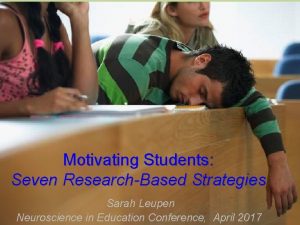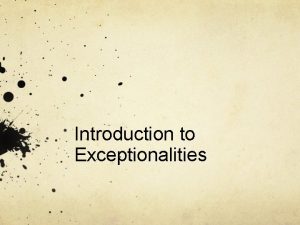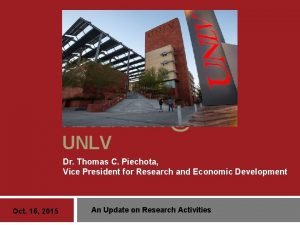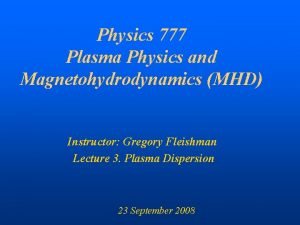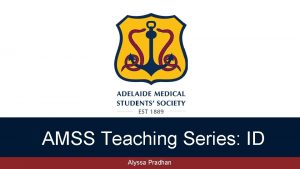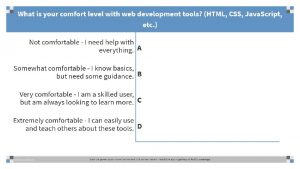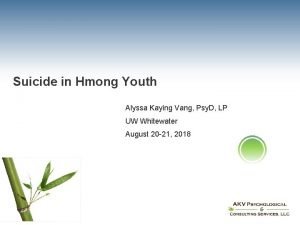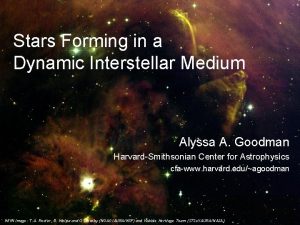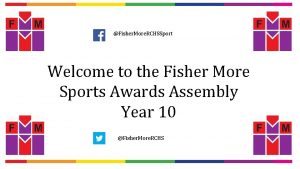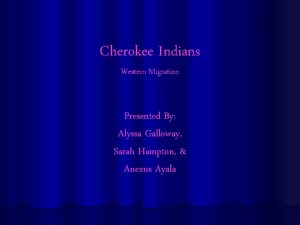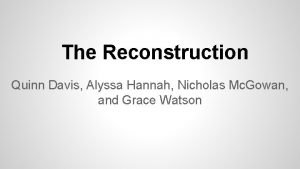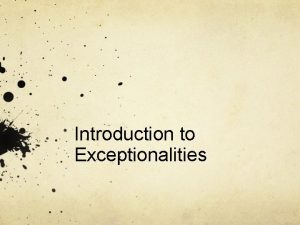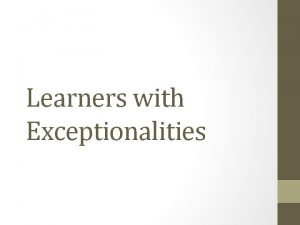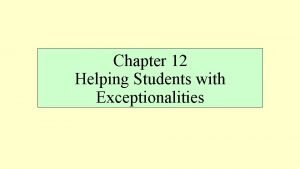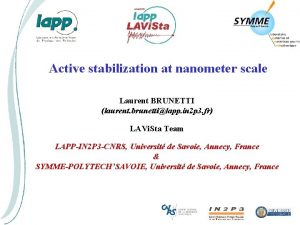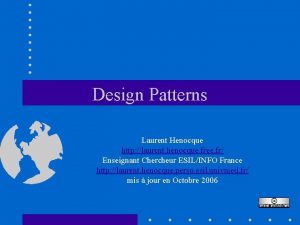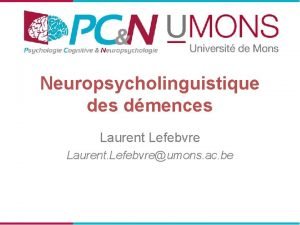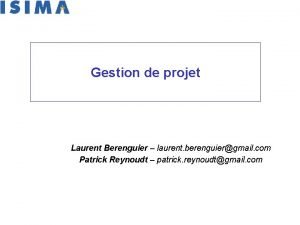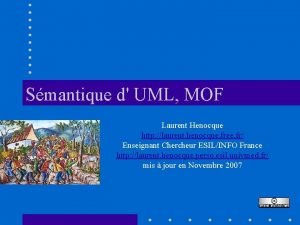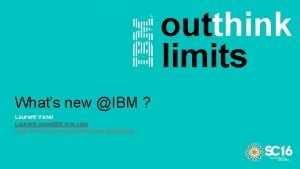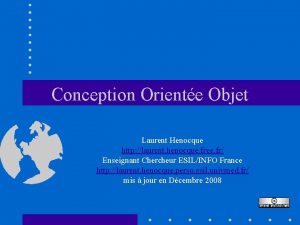My name is Alyssa Laurent Students with Exceptionalities














- Slides: 14

My name is Alyssa Laurent Students with Exceptionalities

Topics q IDEA q IEP q RTI q Inclusion vs. pull out

What is Special Education is defined as programs that address the needs of students with mental, emotional and physical abilities (Pearson).

v 2004 v Nation’s special education law v Schools provide specialized services for students with disabilities until age 21 at NO cost. v Having a diagnosis doesn’t guarantee that a child qualifies under IDEA. . v IDEA gives you a say in your child’s education, and many important rights. v (Lee).

Who is Eligible? 1) Autism 2) Deaf-blind 3) Emotional disturbance 4) Intellectual disability 5) ADHD . In 2017– 2018, around 7 million students ages 3 to 21 received special education services under IDEA. That’s 14 percent of all public-school students. The most common way students qualify is with a specific learning disability.

. v Individualized Education Program. v A document agreed to by the teachers, parents and specialists. v Kids need an IEP before receiving special education classes. v Gives a deeper understanding of your child’s strengths and challenges. v Stay on top of your child’s IEP. v You, as the parent, play a key role throughout the process (Lee).

. (2 dolearn)

v Response to intervention. v A process that helps students who struggle with a lesson or skill. v Can be used for students with or without learning disabilities. v Tested for an intervention (Response To Intervention Explained).

Tier 1 is the core instruction that the classroom teacher delivers to all students. Tier 2 is when students receive targeted interventions delivered by classroom teachers within the classroom setting. Tier 3 is for intensive intervention. These interventions are provided by the school MTSS coordinators or MTSS interventionists.

• As known as push in. • Will bring in materials to the general classroom to work with that student. PROS • Students miss less instructional time within their class. • Less disruption to their daily routine CONS • Rarely any opportunity receive tailored/explicit instruction. • Time/planning can’t fit into a teacher’s day. (Ferguson, 2018).

Pull out Cons Pros • Works closely in small groups outside of class. • Fewer distraction and a quiet setting for focus. • Re-teach concepts that students have struggle on. • Building trust • Students may be centered out for being taken out of a classroom for support. • Scheduling (Ferguson, 2018).

Summary IDEA • • Provides specialized services as no cost Parents have the right to make service decisions for their child IEP • • • Kids need an IEP before receiving services Gives the parent a deeper understanding of their child’s strengths and challenges. Stay on top of your child’s IEP process. RTI • • A series of interventions (if needed) Helps find your child’s struggles with skills or lessons. Inclusion vs. Pull-out • Inclusions will bring in materials to the general classroom to work with that student. • Pull-out works closely in small groups outside if the general education classroom.

Reflection I believe that teachers, parents and everyone involved in the education program should understand the qualifications and needs of an exceptional learner. There are many resources out there to learn and gain knowledge from, especially for parents. As a parent, we want to make sure that our child is getting the best education out there. Describing what IDEA, IEP, RTI, and the pull-in versus pull-out does for the exceptional learners and parents has truly drove it’s course. Many school across the country has access and abilities to help the students succeed and learn inside and outside school. We as teachers give the opportunity for exceptional learners the ability to become who are really are. They are smart individuals who deserve as much learning and lesson planning as other students. All the opportunities goes to show that the education system wants all students, special needs and non-special needs, to succeed in life.

Resources (n. d. ). Retrieved from http: //wps. ablongman. com/ab_slavin_edpsych_8/38/9954/2548262. cw//2548265/index. html Lee, A. M. I. (n. d. ). Individuals With Disabilities Education Act (IDEA): What You Need to Know. Retrieved from https: //www. understood. org/en/schoollearning/your-childs-rights/basics-about-childs-rights/individuals-with-disabilities -education-act-idea-what-you-need-to-know (n. d. ). Retrieved from https: //nces. ed. gov/programs/coe/indicator_cgg. asp (n. d. ). Evaluation and Identification. Retrieved from https: //do 2 learn. com/disabilities/Evaluation. And. Identification. html Morin, A. (2019, August 5). Understanding Response to Intervention. Retrieved from https: //www. understood. org/en/school-learning/specialservices/rti/understanding-response-to-intervention (n. d. ). Response To Intervention Explained. Retrieved from https: //www. specialeducationguide. com/pre-k-12/response-to-intervention/ (n. d. ). What is MTSS? - Multi-Tiered Systems of Support (MTSS). Retrieved from https: //sites. google. com/a/nhcs. net/virginiawheeler/what-is-mtss Ferguson, S. (2018, May 28). Push In Vs. Pull Out – Inclusive Education in Motion. Retrieved from https: //specialeddubai. wordpress. com/2018/05/28/push-in-vspull-out-inclusive-education-in-motion/
